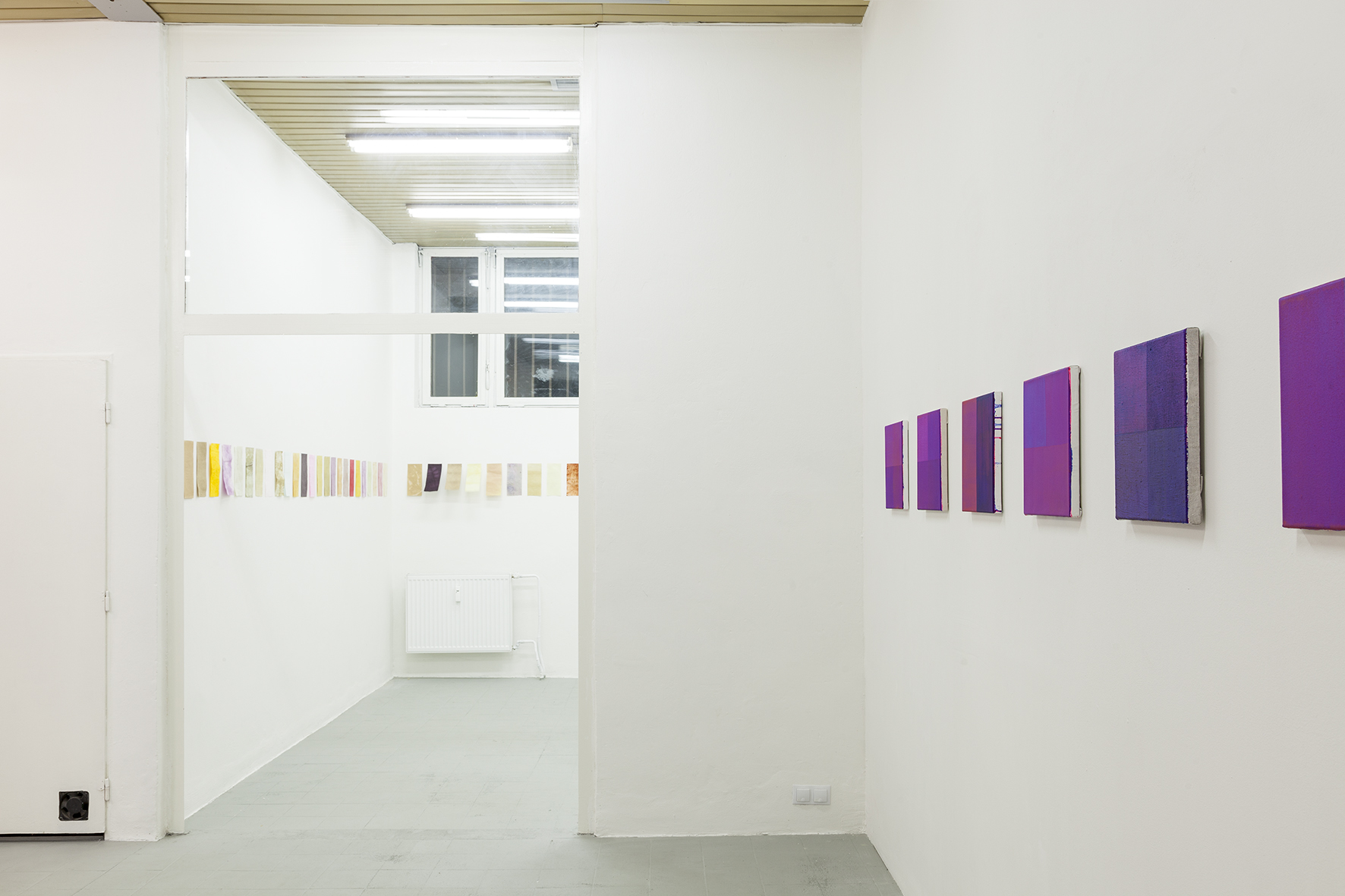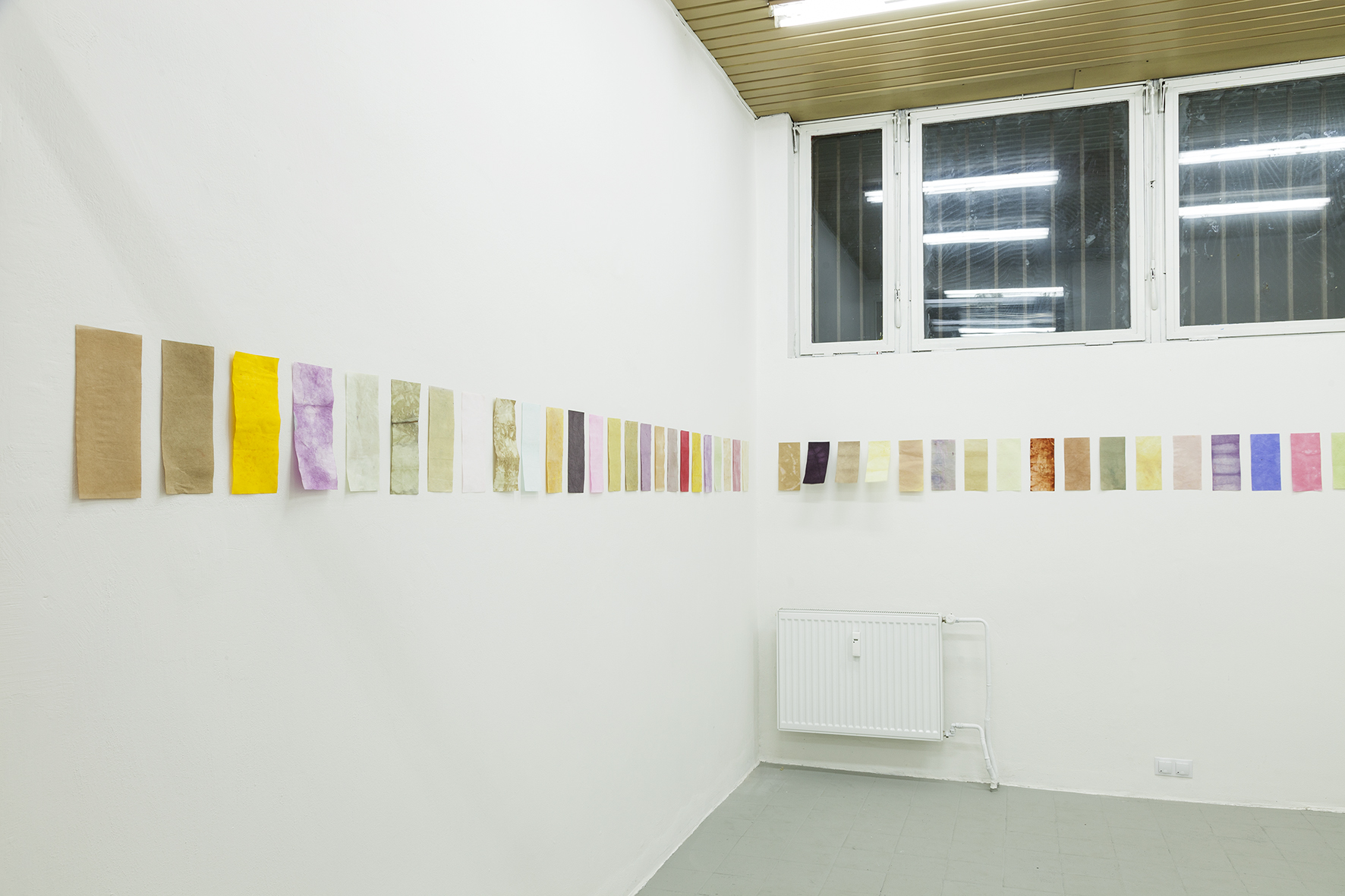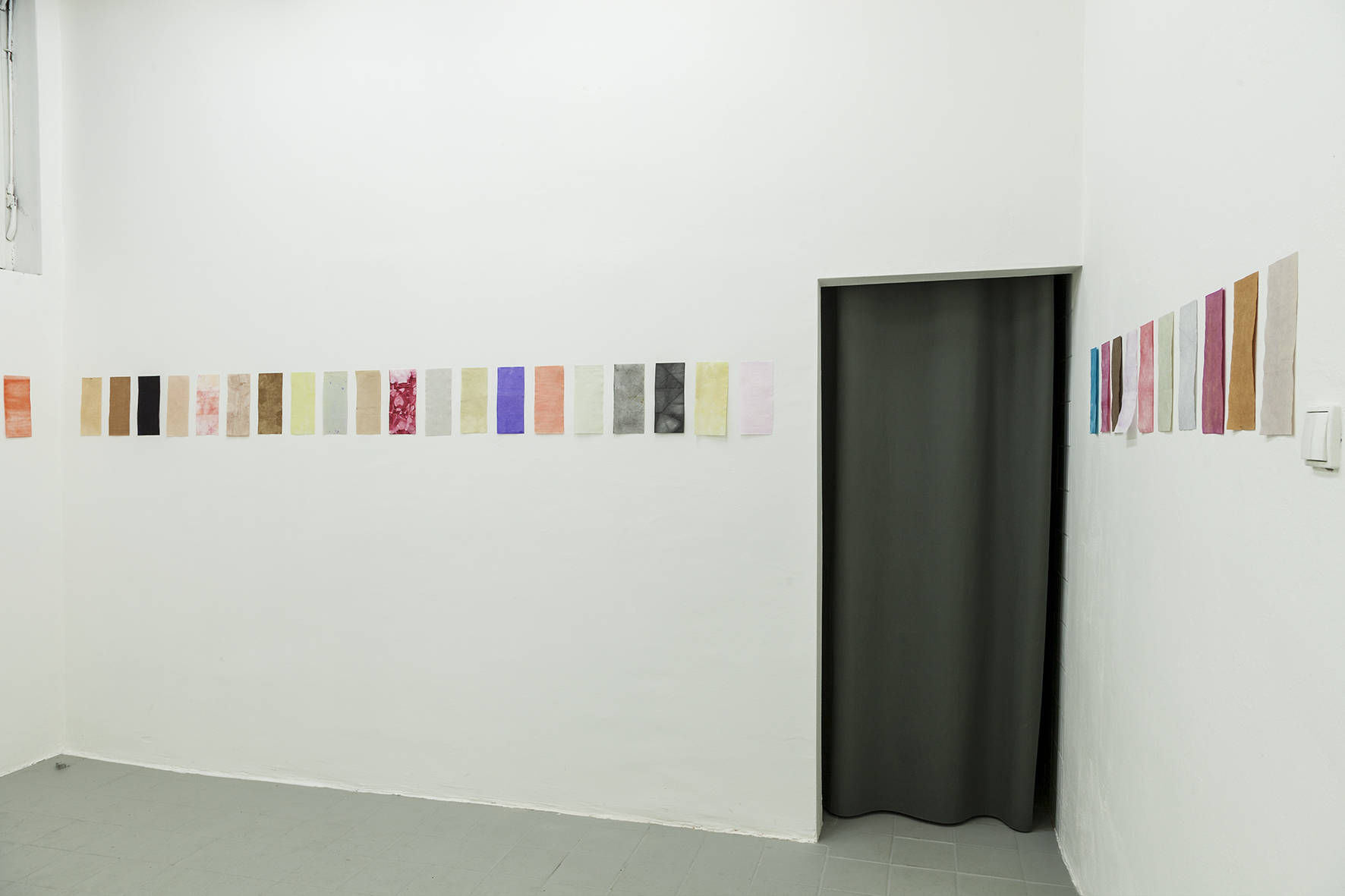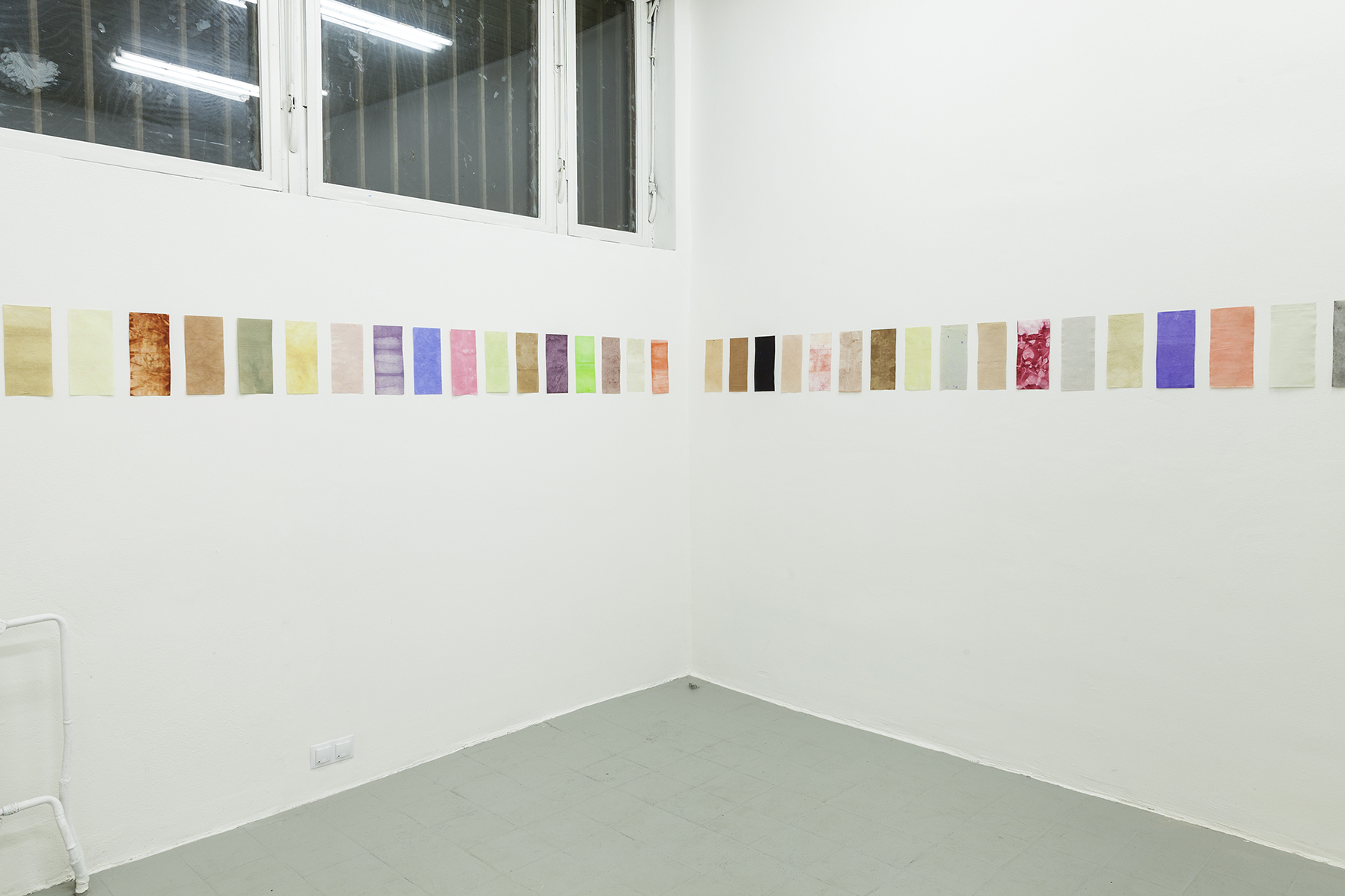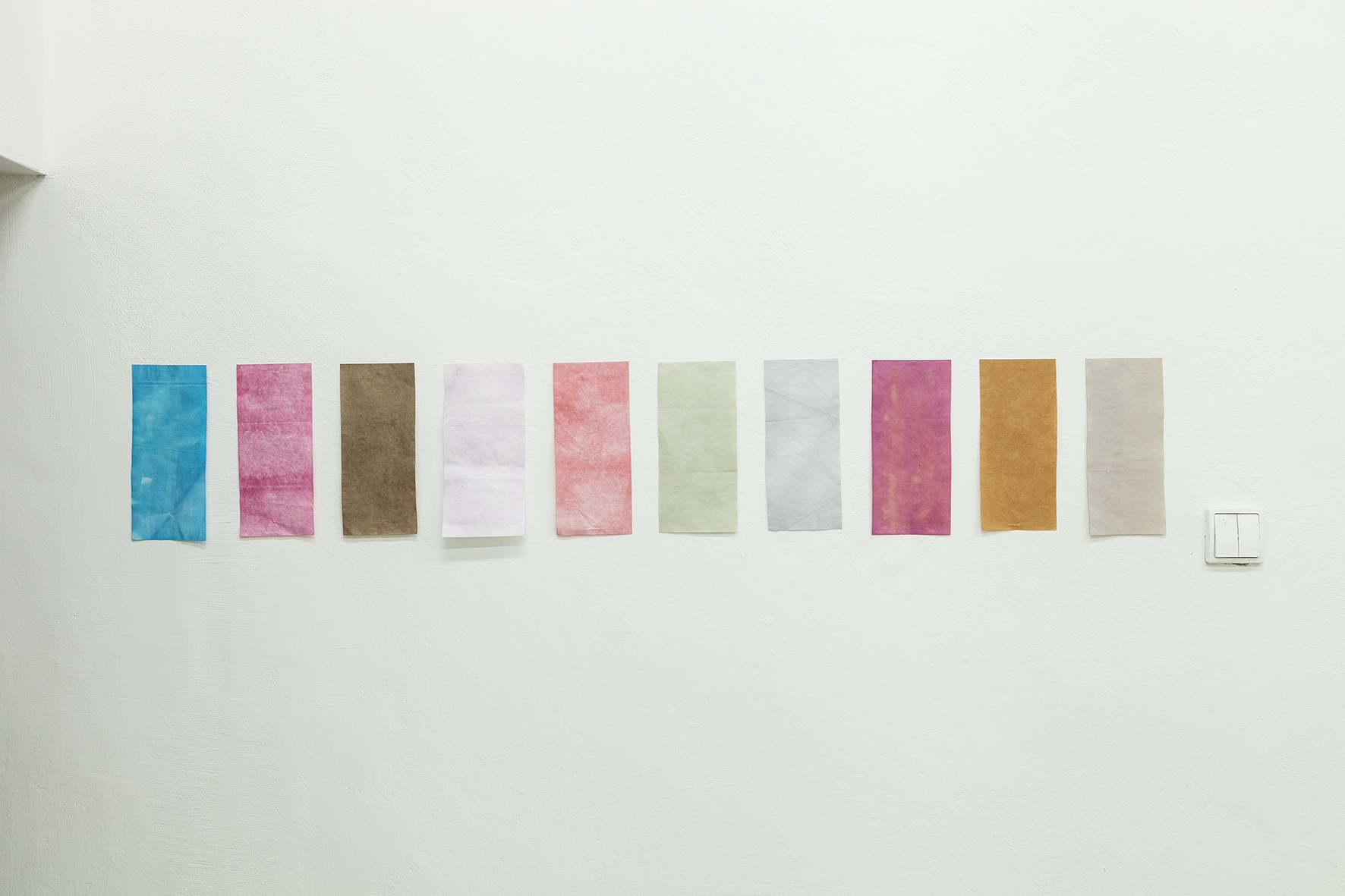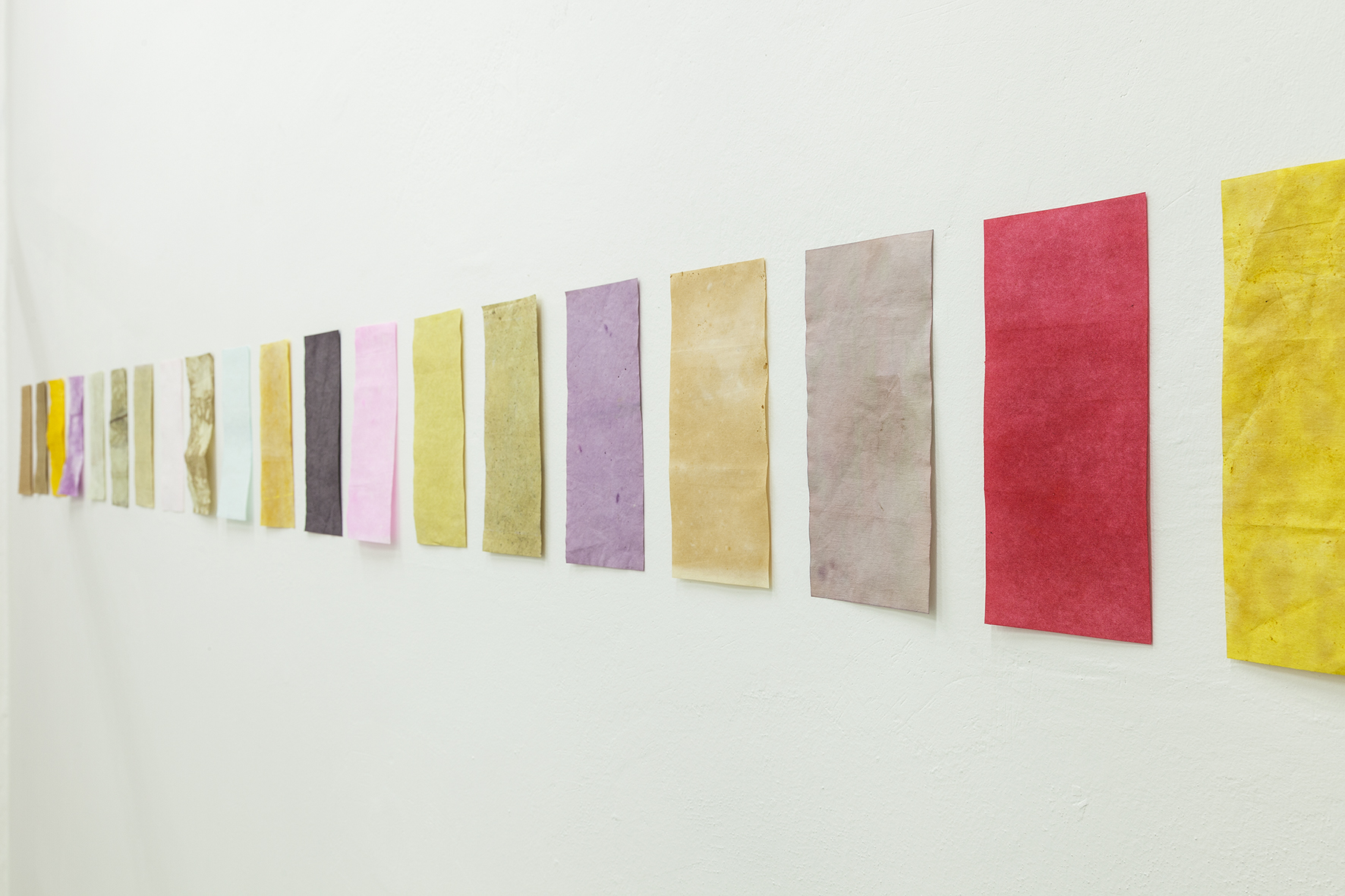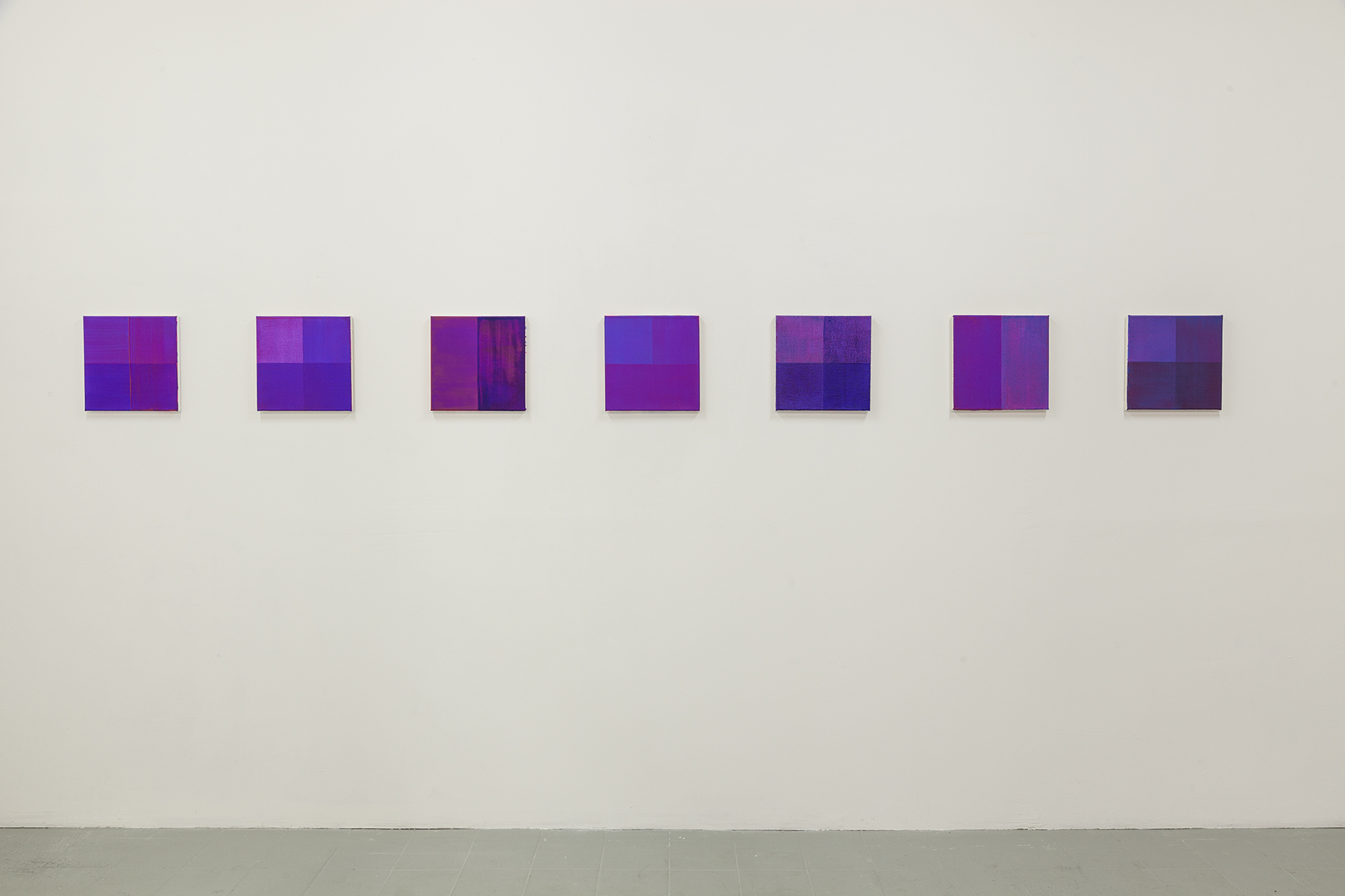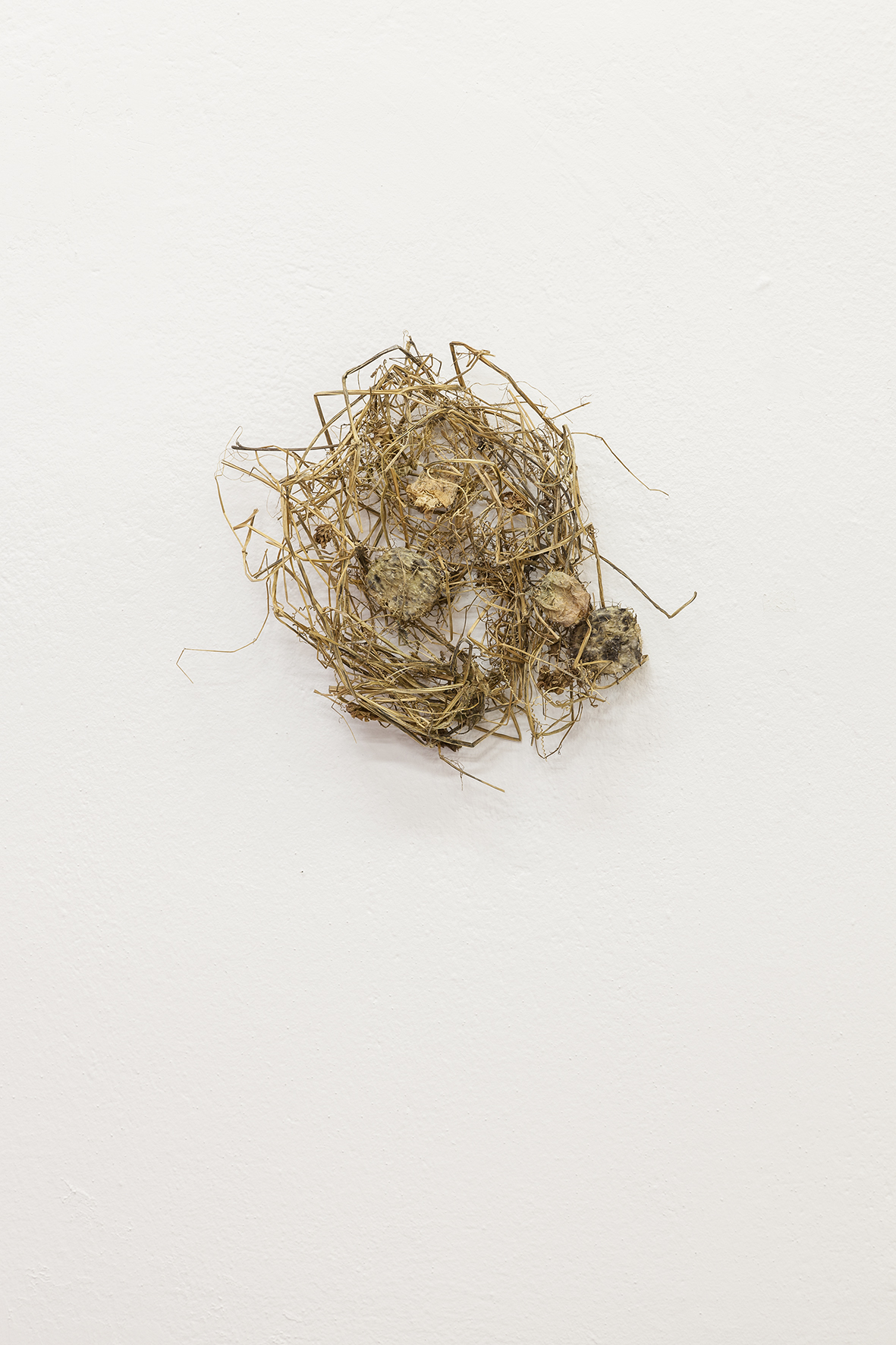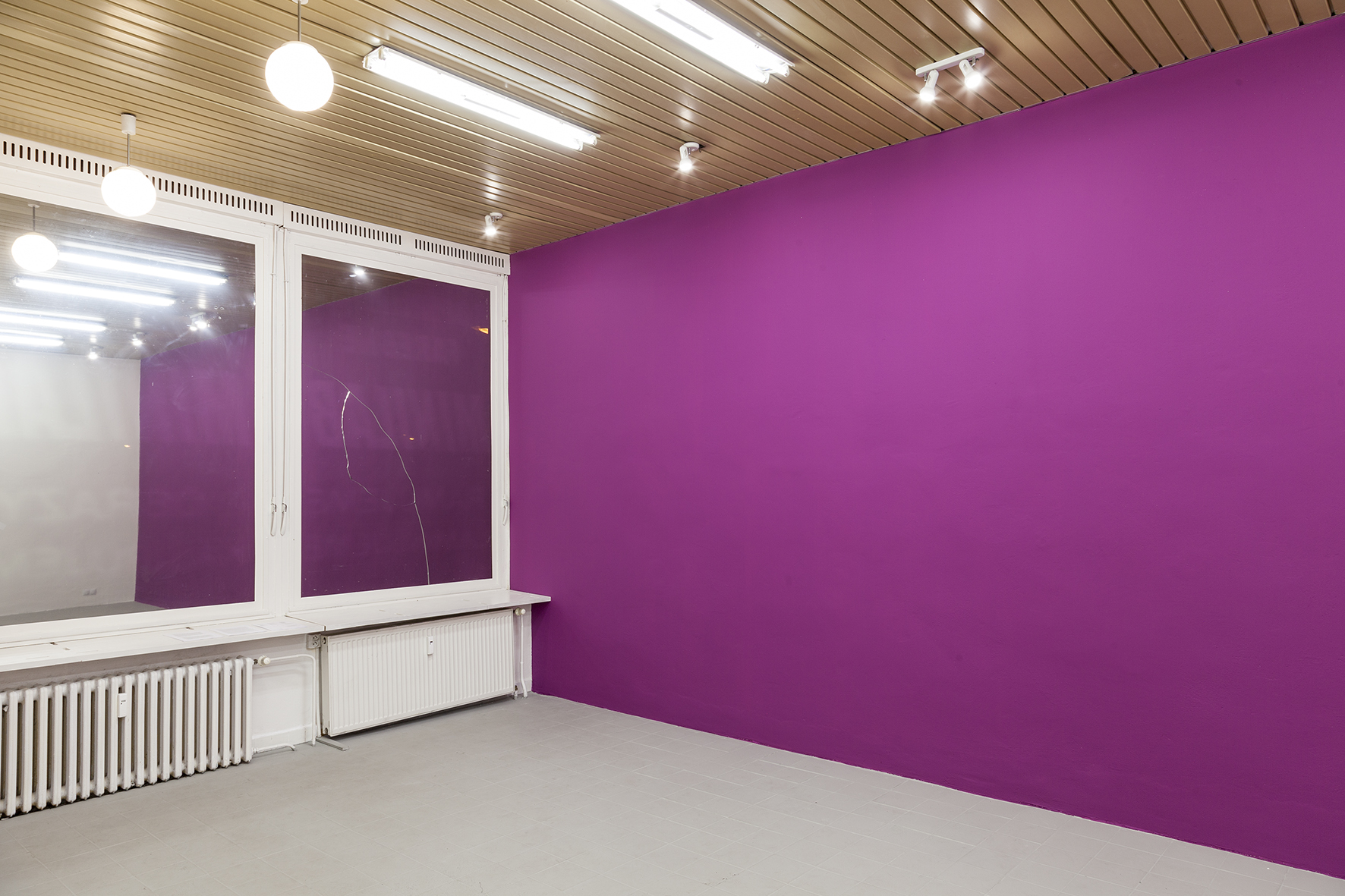Artist: Jelena Mićić
Title: MOLERAJ
Venue: Temporary Parapet
8 November―6 December 2019
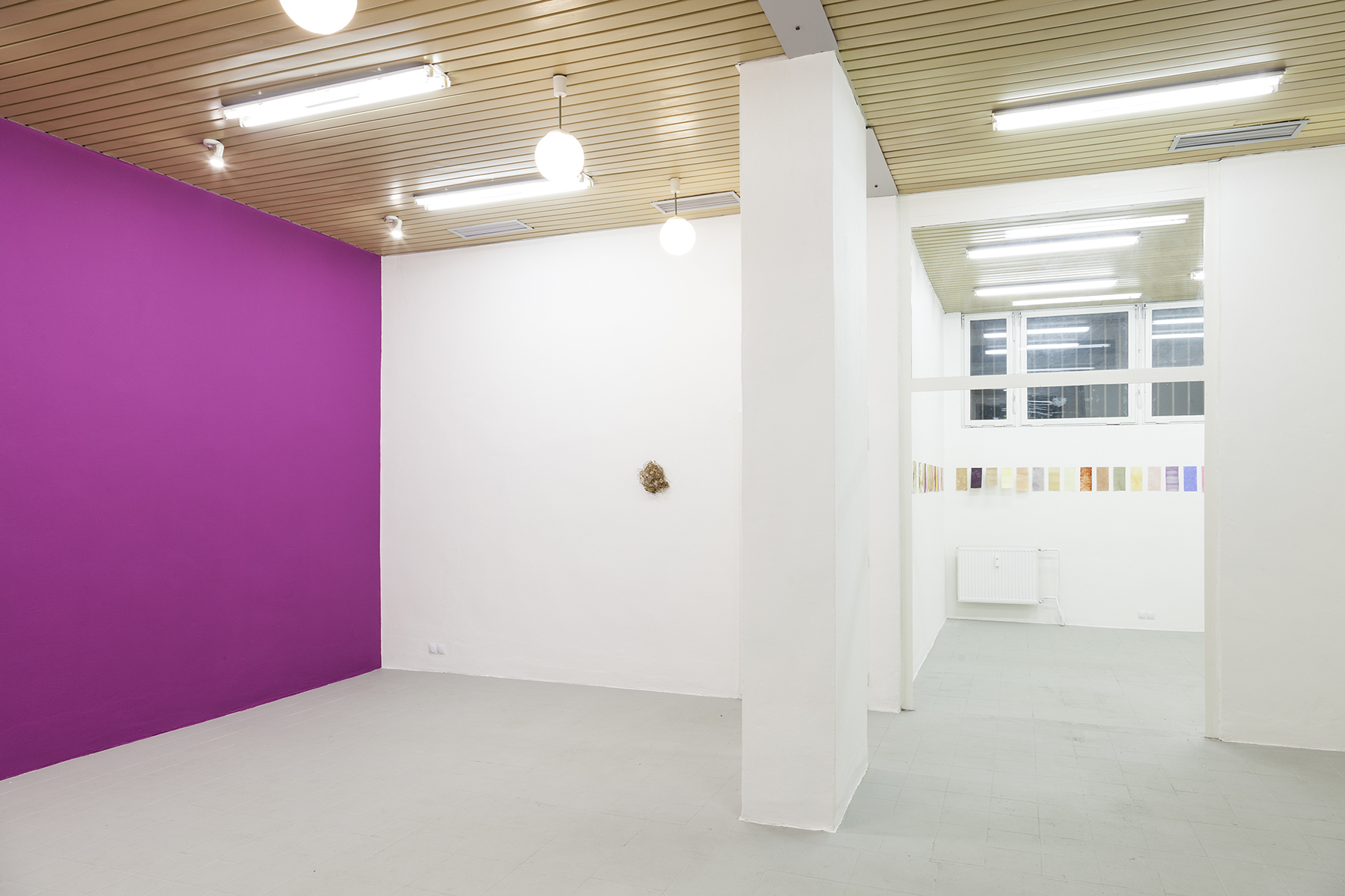
Who is it living in Mary’s room?
MOLERAJ is an alternate treatment of the phenomenological and epistemological position of the artist, and therefore the observer. The alleged gap is actually constantly intertwining. During several years of examining various aspects of color, Jelena thematizes, through different materials and methodologies, the quality and discrimination of color, thus the foluresent purple becomes her discernability. This and not that. This kind of methodological approach may not even be visible to the untrained eye, or perhaps even may seem impossible for a certain percentage of the population who, due to biological configuration, simply cannot notice the subtle differences that the author persists on. Is then the locus of the exhibition titled MOLERAJ on the conceptual or visual aspects? A question that Jelena does not give a clear answer to or suggests a hint by the way the work Untitled was constituted, as well as her attempt to question the role of the artist in the production of the work. Namely, the choice of the characteristic color applied to the wall by the hired painter. If one accepts the work as artistic, the old question of authorship is raised. If she herself is the author, then the romantic act of craftsmanship, brush strokes and tinting are not what makes the work. In that case, the focus is on the question of gratification, which goes along the quality of the color chosen as such. Who can actually “see” the work if not all the information is available? What is the available information? How knowledge and context actually affect our perception is best illustrated by Frank Jackson’s thought experiment with Mary the Neuroscientist, who has spent her entire life studying color from a neurophysiological standpoint. She knows which parts of the brain are activated when color is perceived, what is the exact wavelength of the neon purple she is studying, and when she should use the word “neon purple” in conversation or text. However, Mary spent her entire life in the Laboratory, which is black and white. Regardless of the fact that Mary “knows everything” about the physical characteristics and neural correlates of neon purple, the question is whether she would learn something new when she exits laboratory and directly faces the very color. If Jelena’s answer to the question is positive, then her art lies in the visual, in the other case the work is leaning on and is being contextualized towards the conceptual artistic practice. The work of the explosive title Bojne probe thematizes the presence or absence of the artist, and so the key part of the work is not the decision itself, but the brushstroke, which is nevertheless systematically applied to the canvas in an attempt to bring into visibility the individual behind the act.
The language game that Jelena is inclined to also in earlier works is reflected in the use of the term in the title of the exhibition. The ambiguity in German and English indicates the indistinguishable meaning of the word “painter,” in one sense as “the artist who paints paintings” and in the other, “the person whose job it is to paint walls.” In addition to linguistic ontological, there is no doubt about the economic implications of exploring this ambiguity. Of course, when it comes to the taboos of money, employment and payment in the field of contemporary art, it is necessary to mention knowledge as the primary source of valorisation, returning “work” to the cognitive aspect and the question of power. Who can “see” this art is a controversial issue with political implications and is reflected in distinction, elitism vs populism as well as populism vs democratisation. Such divisions involving aspects of “knowledge” and the question “who may know” play a key role in the production of art in a time of cognitive capitalism.
Žarko Aleksić
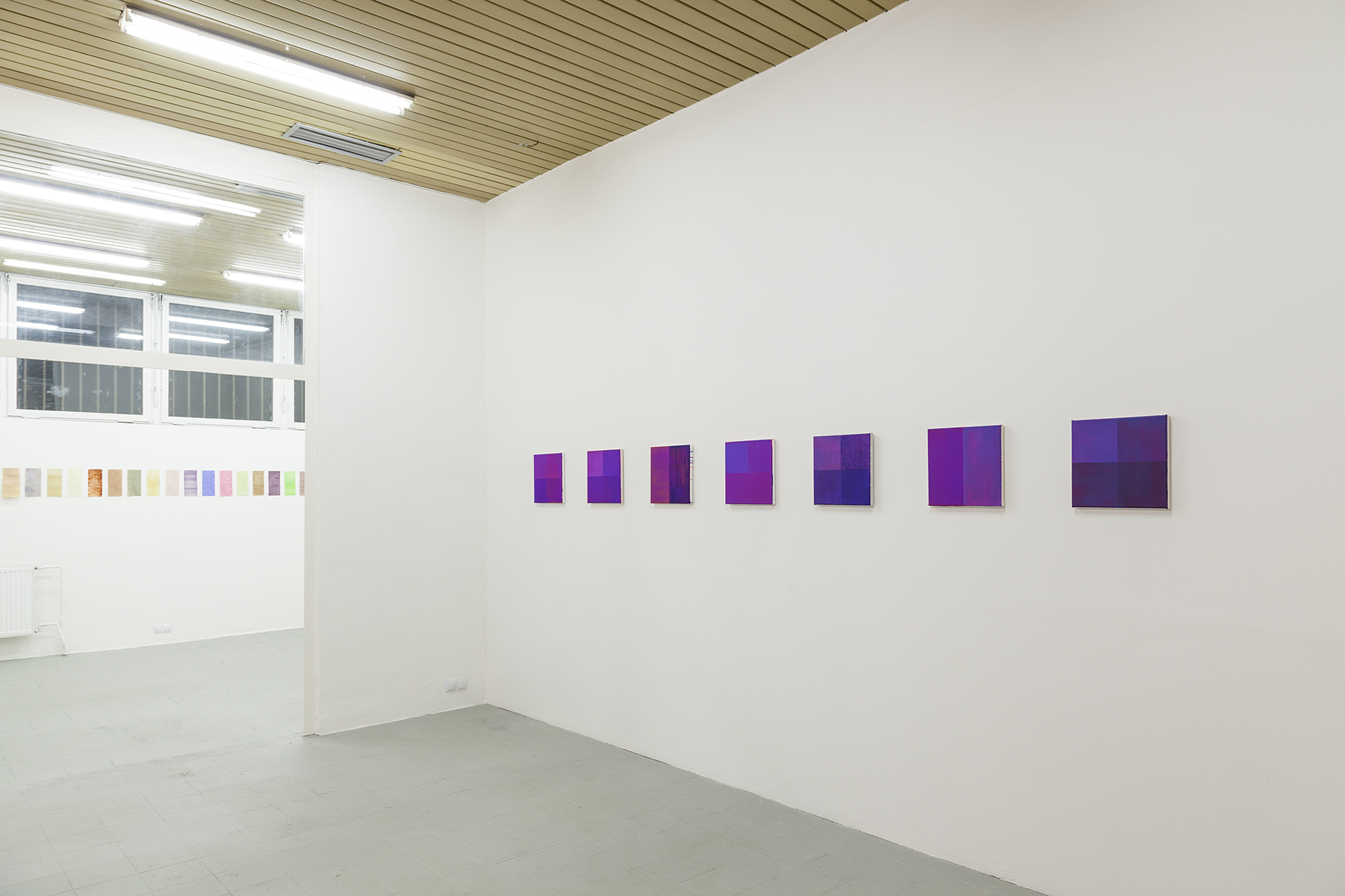
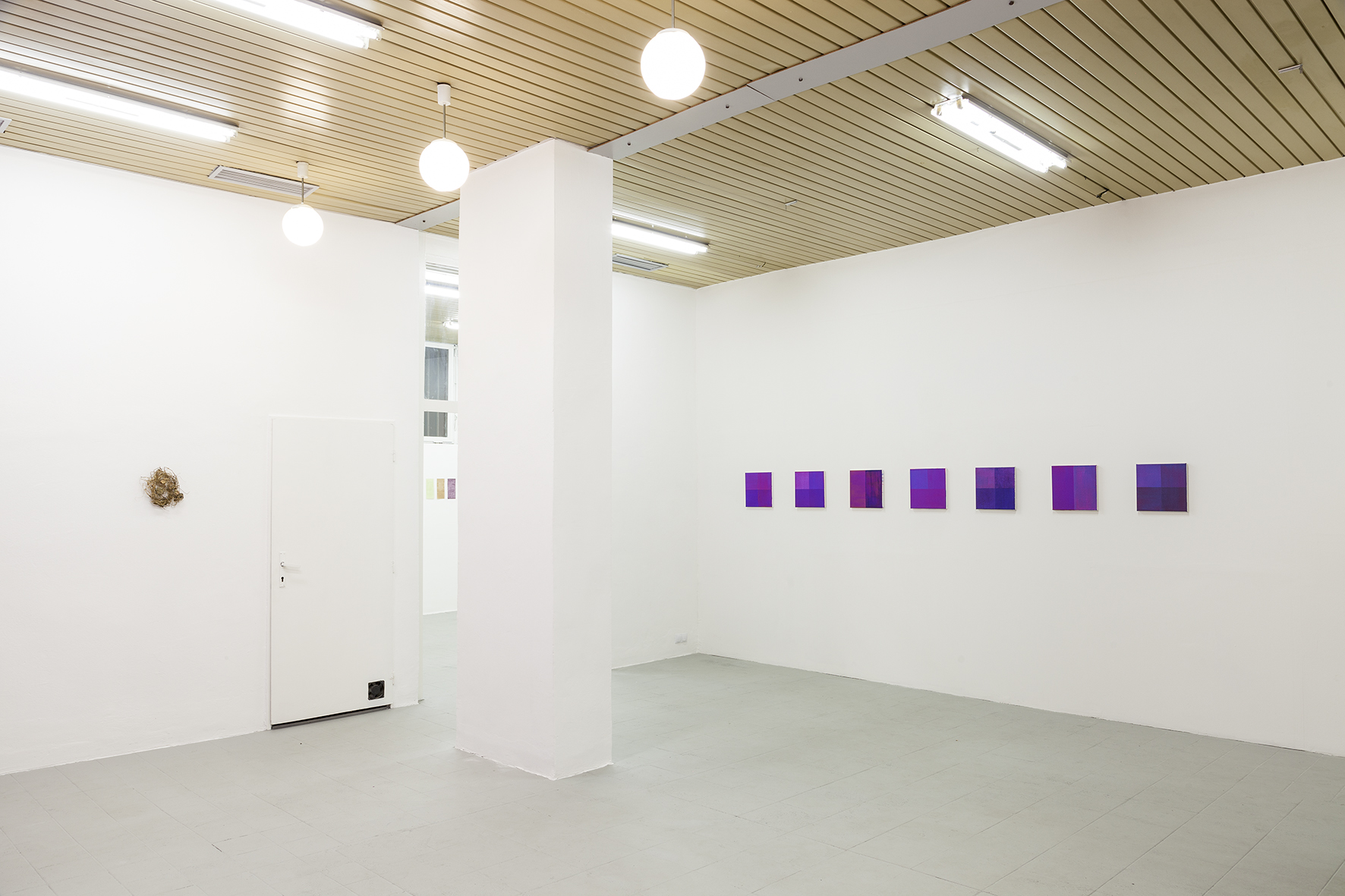
Temporary parapet is an artist-run gallery (established in 2017 by Alexandra Barth) focusing on emerging and semi-established artists working with different media. The aim is to bring an exhibition space alternative to the standard gallery network in Slovakia, more casual and project based one. We like to encourage young curators and artists to work together. We are not motivated on the commercial success, trying to avoid cliques and opening a dialogue between different art practices and backgrounds.
In 2019, TP moved its gallery space to Petržalka, the most inhabited residential area of Bratislava to join three other independent art spaces (HotDock, Photoport and LOM) with whom we organise Petržalka Gallery Weekend – an art festival, happening once a year in June.
Our new space is located in a typical 70’s socialist housing block, with a terrace meant to be a boulevard offering its inhabitants a place to shop. For the last decade, most of the grocery shops and basic services closed, due to the competition of big companies. Many of the former shop-spaces are now private offices, inaccessible to the public. Temporary Parapet as well as other galleries, is fighting the cultural and communal apathy here, welcoming neighbours to visit the exhibition events and once a year even artist’s studios.
